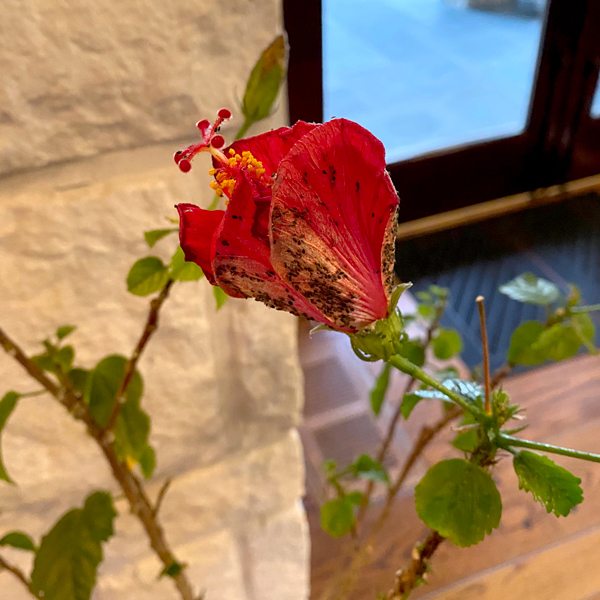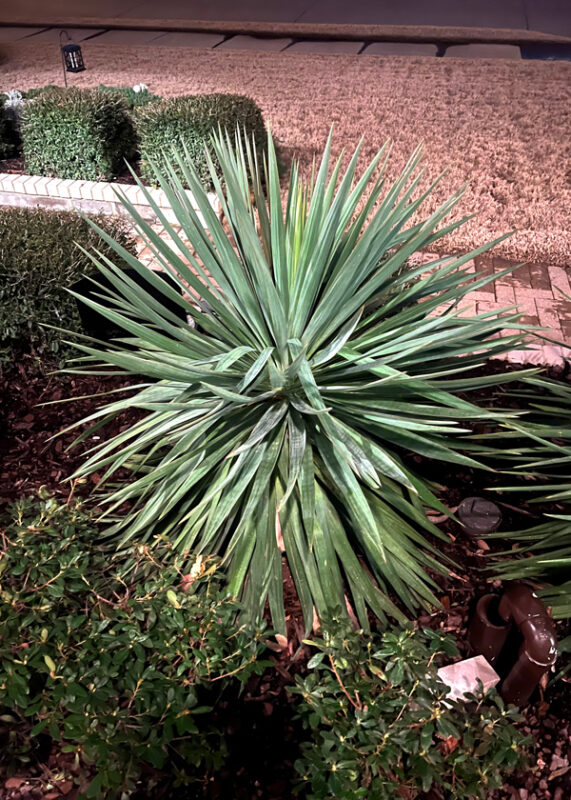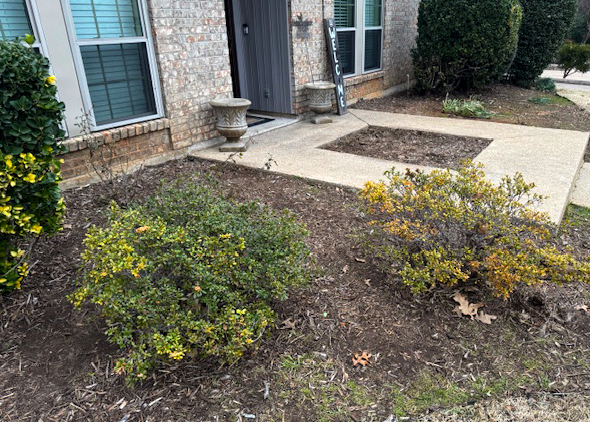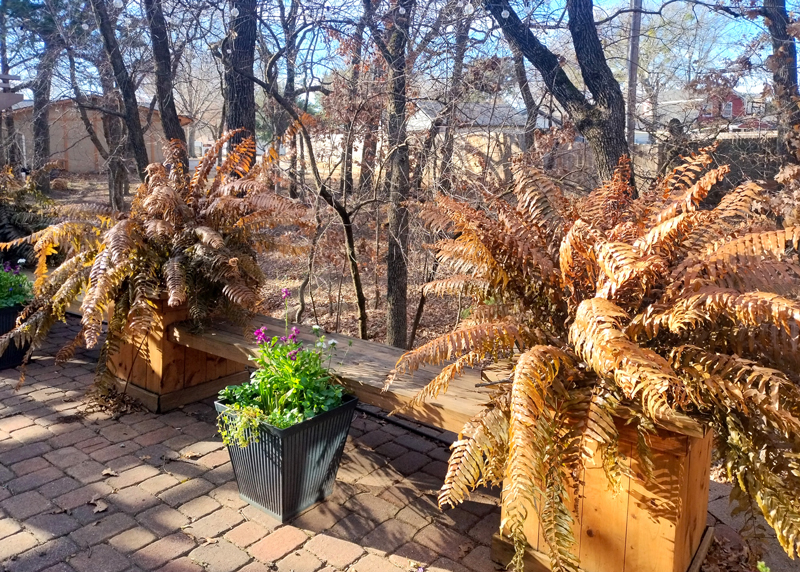Q&A – Ask Neil: February 6, 2025
(Please read these instructions carefully.)
Before you post your question, please look at recent issues to see if someone else has already asked it. You might find your answer there.
How to submit your question…
(Note: You may need to allow a pop-up window to come up in order to get the link for sending your photo(s). If you have already submitted your question and didn’t see the pop-up window, please click here.)
• Click the link provided below to post your question. After you submit your question, a new window will pop up giving you the address to which you can e-mail a SHARP, HIGH-RESOLUTION PHOTO to accompany your question. Please DO NOT SEND THUMBNAIL PHOTOS in case I need to zoom in to see things.
• Click here to post your question.
• Please ONLY POST YOUR QUESTION ONE TIME. We can only accept a set number of questions each week, and when we get duplicates it costs other people their chances.
• One question per reader, please.
• Please use this only for posting questions – not for standard emails.
• Watch for your answer in the following week’s e-gardens.
• I choose those of greatest general interest. For example, plant IDs seldom make the cut.
• I must have your first name or initials.
• I must have your city or county. (Texas is a very large state.)
QUESTION 1
WHAT ARE THESE INSECTS ON THE HIBISCUS AND WHAT WILL CONTROL THEM?
Question: I agreed to keep my daughter’s hibiscus for her over the winter, but these insects are all over it. Insecticidal soap has not killed them. What are they, and what will control them? Marsha G., Tarrant County.
Answer: These are aphids. Look closely and you’ll notice they are pear-shaped, each with “twin exhaust pipes,” and usually found clustered in large numbers. They reproduce prolifically with each female able to give birth to living young without males. You could take the plant outside on a warm day and wash most of them off with a hard stream of water. Most general-purpose insecticides will control aphids but be sure there aren’t precautions against using them on hibiscus. The plants are sensitive to many insecticidal sprays.
QUESTION 2
CAN I TRIM THE TOP HALF OF MY YUCCA PLANTS OFF TO REDUCE THEIR HEIGHT?
Question: We have two yuccas in our front landscaping that have become overgrown. Can I cut the top half off each plant without causing damage? I suspect I may need to replace them if trimming is not advised. Kevin Q.K., Prosper.
Answer: They can be trimmed and new sprouts will develop where you make the cuts. I’m looking at your photo as I try to visualize how this plant will look (1) after you cut the top out of it, perhaps about where the leaves change from hanging downward to curling upward. To my eye, that would look odd, but the plant would survive. Then (2) the plant would form new sprouts right around the cut on the stem. That, too, would be peculiar. You’ll probably be happier with the yuccas gone. Maybe you have a place where they could grow larger. They’re tough to dig, but at least you’d be saving them.
QUESTION 3
WHAT IS WRONG WITH MY AZALEAS?
Question: My beloved azaleas have some kind of problem. They were planted at the same time, and they get the same water and food. One is yellowed and the other is beginning to follow suit. What can I do? Sherri T., Grapevine.
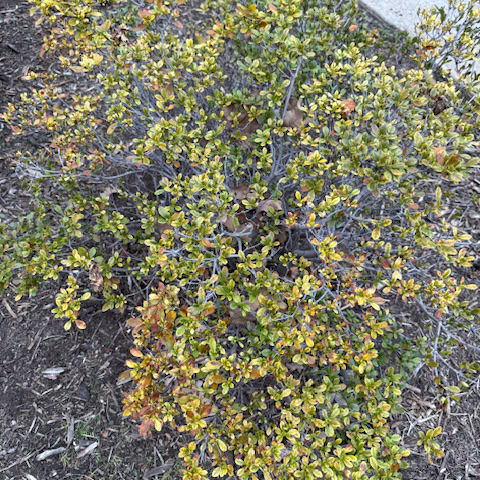
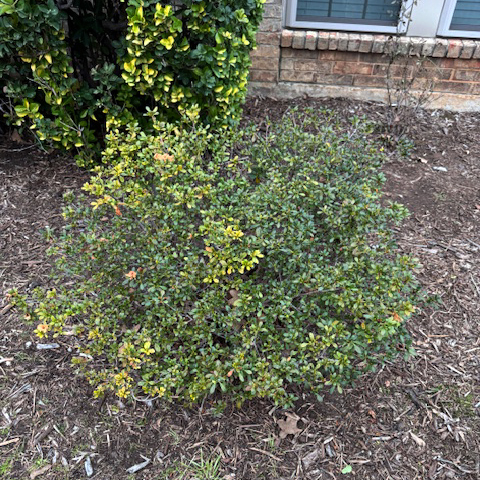
Answer: They’re struggling with iron deficiency. It’s very common in the Metroplex and along I-35 all the way to Central Texas. Iron becomes insoluble in alkaline soils like most gardeners face in the DFW area. Adding sulfur soil acidifier will help a small bit, but even the water with which you irrigate is highly alkaline, so it’s all a matter of time. Iron is a part of the chlorophyll molecule, and when it’s lacking leaves will begin to turn pale green at the tips of the branches (youngest leaves first). Veins will remain dark green the longest. From pale green the leaves will shift to yellow, then almost white, then brown before they fall and leave the twigs bare.
You deal with this by preparing soil extensively prior to planting. Dig and remove 6 to 8 inches of the existing topsoil. Replace it with a mix of half sphagnum peat moss and half finely ground pine bark mulch 12 inches above the surrounding grade. As it settles and compacts, you’ll want to add 2-3 inches of fresh mix each year immediately after flowering.
Simply adding iron and sulfur acidifier to your plants now won’t do much to help them. The deficiency has already taken its toll and results won’t justify the cost. You’ll be much better off starting with fresh, vigorous plants this spring.
For what it’s worth, it looks like the tall shrub behind the one azalea is also showing signs of iron chlorosis. The iron additive would probably help it if it’s a holly. If it’s a euonymus, it may have reverted to its solid green form. I can’t see it well enough from the photo.
QUESTION 4
HOW CAN I PRUNE MY PYRACANTHA?
Question: My pyracantha is in serious need of reshaping. What would you suggest? Claudia S., Nueces County.
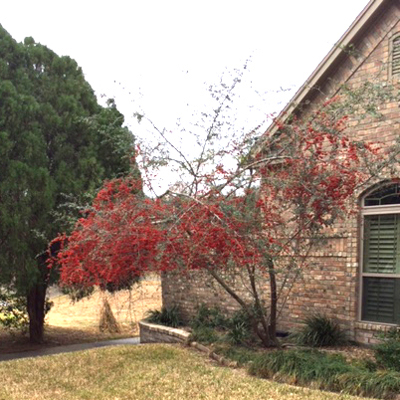
Answer: Your good news is that you’ll have trouble killing it, so any mistake you could make won’t be fatal. My suggestion would be to use lopping shears to trim all growth back to at least 15 inches below the top of the arch of the window. Groom the cuts so the plant won’t look like you ran a mower over it. Then I would selectively start removing branches and twigs out from the portion that has the heavy berry load. My goal there would be to trim it back to within 12 or 14 inches of the edging – trying to make it look more like it’s not falling out of the bed. It’s difficult to give precise suggestions without being there on site. I hope that helps, however.
QUESTION 5
WHAT EVERGREEN SHRUBS COULD I PLANT IN THESE CONTAINERS FOR SCREENING?
Question: We have two 25-gal. pots on our back porch. I put Kimberly Queen and Macho ferns in them during the summer for privacy, but when the trees are bare that goes away when the ferns die in the cold. What evergreen shrubs would grow in dappled shade spring through fall? They need to reach at least 5 ft. tall, and they have to be winter hardy because of the weight. I have Nellie R. Stevens hollies at the back of our property, but because of the slope, it’s going to take years for them to get tall enough to block the view of the neighbor’s yard. Lisa B., Mansfield.
Answer: The two groups of plants we have that are most winter hardy are hollies and junipers. Of those two, hollies are by far the better when shade enters the picture. Dwarf Burford grows to 6 or 7 ft. over the course of 25 years, so the honest answer is that it would be ideal. However, Willowleaf (also called Needlepoint) would get there much faster and give you a more relaxed look. It grows to 8 to 10 ft. tall and wide, but it can be kept more compact by occasional pruning. Both of those hollies produce lovely red berries that would hold all winter. Your main challenge would be never to let them dry out. Just one time to forget and you could lose them. They don’t really wilt, so you’ll need to learn to feel the soil. The Willowleaf hollies, especially, would outgrow the pots after 4 or 5 years, becoming very rootbound and difficult to keep watered.
QUESTION 6
HOW CAN I GET A DARK GREEN COLOR IN MY ZOYSIA?
Question: We have zoysia for our lawngrass. The first year it was the envy of the neighborhood – very dark green. Since then, it has been much lighter in color. I have read that iron sulfate or Epsom salt will help it be darker green. If that is true, how much should I use? Bill F., Smith County (Tyler area).
Answer: Start with a soil test from a reputable soil testing laboratory. Texas A&M certainly has one in College Station. Epsom salt contains magnesium, and in the off chance that the soil test shows that to be lacking, they could offer suggestions. However, it’s never been something I’ve recommended for use on turf.
As for iron sulfate, I guess that could help green things up if you truly have an iron deficiency. The soil test report would show that. However, you’ll almost never see that in the acidic soils of the Tyler area. I’d be amazed.
You’re much more likely to find that you need to be adding nitrogen, preferably an all-N fertilizer with 30 to 40 percent of the nitrogen in slow-release form.
Mow regularly at the height recommended for the variety you have and watch for disease problems that could crop up.
This zoysia care page is an odd reference for me to post since it’s not from a university website, but I just happened to come across it and felt that its information on care of zoysia was quite good. It’s from Delaware, so you may need to increase the total amount of nitrogen you apply due to our longer growing season.

